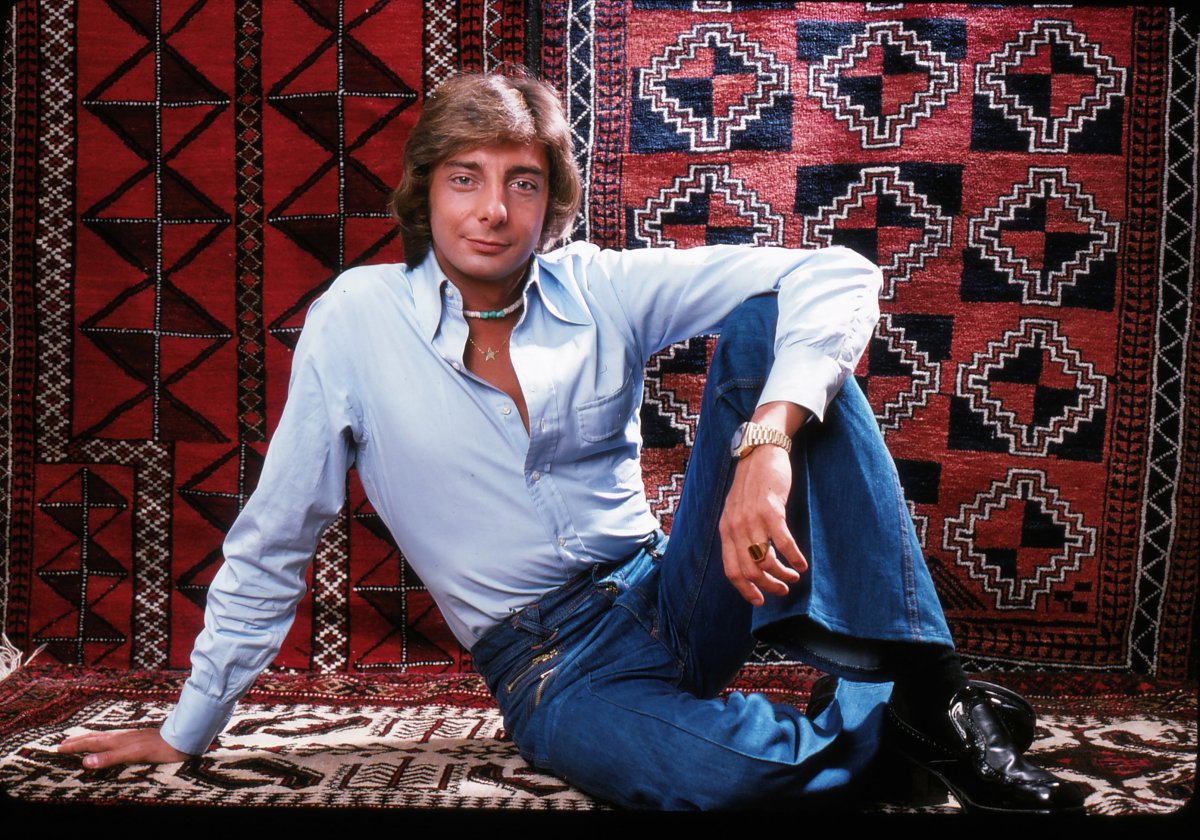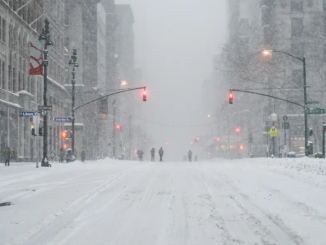
During a guest appearance on HBO’s Who’s Talking to Chris Wallace, the 80-year-old Copacabana singer said he didn’t think it was important to announce his sexuality during the earlier decades of his career.
Manilow came out in 2017, almost three years after he married his husband and manager Garry Kief in a private ceremony. The couple have been together for 45 years now, though they’ve kept much of their relationship away from the public eye.
When he came out to People magazine in 2017, Manilow — whose real name is Barry Pincus — worried he’d be “disappointing” some of his fans by revealing his sexuality. Instead, Manilow, who was 73 at the time, said the reaction from his fanbase was “beautiful.”

Despite his current feelings of nonchalance about his own coming out, Manilow said announcing his sexuality as his career was booming would have been a bad idea.
“Now being gay is no big deal,” he explained. “Back in the ’70s it would have killed a career.”
Regardless, the usually very private Manilow said he thinks “everybody knew that Garry and I were a couple all those years.”
“Really, Garry and I’ve been together for so long,” he said. “It just never dawned on me that we’re going to come out. But when we got married, it was a big deal, so we did.”
Manilow credited Kief for saving his life. He said he is thankful he had Kief to support him as his music career was taking off, despite keeping their relationship under wraps.
“As my career exploded, it was just crazy. And, you know, going back to an empty hotel room, you can get into a lot of trouble if you’re alone night after night after night,” Manilow explained. “But I met Garry right around when it was exploding. And I didn’t have to go back to those empty hotel rooms. I had somebody to cry with or to celebrate with.”
Manilow said he did not wish an isolated hotel room for any young people.
“It was pretty lonely until I met Garry. And then it was fun,” he smiled.
Kief is not Manilow’s first spouse. In 1964, Manilow married his high school sweetheart, Susan Deixler. They were married for one year.
Manilow told CNN’s Wallace he “really did love” Deixler, but added “the gay thing was pretty, pretty strong. I couldn’t deny it.”
The singer said he knew he was gay before marrying Deixler, but their marriage ended because Manilow couldn’t be the committed husband his then-wife needed. He revealed that his sexuality was not the reason his marriage failed.
“We had a very nice marriage, it was great, but I was away every night making music, as a young musician would be,” Manilow described. “It wasn’t good for me, and it wasn’t good for her.”
“I couldn’t be the proper husband,” he continued. “I was out making music every night, sowing my wild oats. I wasn’t ready to settle down.”
Brooklyn-born Manilow skyrocketed to international fame in 1974 after his release of the ever-popular pop-rock ballad Mandy. He became one of the biggest-selling musicians of all time. Prior to his success as a singer-songwriter, Manilow was behind a number of famous commercial jingles for brands like State Farm and Band-Aid — a gig that he has said helped him create catchy hooks for his own hit songs.

Science Shows That Women Sleep Better Next To Dogs Than Men

The importance of sleep for one’s health should go without saying. The ideal approach to obtain restful sleep is a topic of great interest to a large number of researchers. But forget about meditating before bed and drinking chamomile tea. It has been found that women sleep better when their dogs are nearby. That’s correct, a study by Canisius College in New York State revealed that dogs make more comfortable sleeping companions than either people or cats.
Christy Hoffman, Ph.D., an animal behaviorist and the study’s chief researcher, said, “We found that women commonly rate dogs as better bed partners than cats and human partners and report that their dogs enhance their sleep quality.”
According to Research, Women Sleep Better Next to Dogs
Hoffman arrived at these conclusions after surveying almost a thousand American women. According to the findings, 31% of the participants and 55% of the participants shared a bed with a cat or a dog. Moreover, 57% of these ladies slept in the same bed as a human companion, compared to the other 40%.[1]
Hoffman also found out why dogs appeared to be the most comfortable bedmates.The first explanation is that dogs’ sleeping habits more closely reflect human sleep patterns than those of cats.
Hoffman stated, “It is not surprising that dogs and cats have different sleep schedules because dogs’ major sleep periods tend to coincide more closely with humans’ than do cats’.”
Even though these similar sleeping habits might have advantages, additional research is necessary to be certain. However, Hoffman has some ideas about how this might function.
She said, “Dogs may be better at accommodating their human’s sleep schedule than human bed partners.” Human bed companions frequently go to sleep and wake up at significantly different times from one another. Sleep disruption is undoubtedly a result of schedule discrepancies between spouses. It’s possible that canine bed companions adjust to their owner’s schedule more easily than do human bed partners.
Dogs also need specific routines and obligations, like an early morning stroll. These kinds of regimens support their users in sticking to a schedule, which enhances the quality of their sleep.
\Calm and Safety
Dogs also have a tendency to remain rigid during sleep. Anyone who has ever shared a bed with a fidgety partner understands how annoying they can be. Nonetheless, the study’s female participants stated that, in contrast to cats, who tended to come and go, their dogs spent the most of the night on the bed.
This implies that cats might be more prone than dogs to disturb sleep by getting in and out of bed at different times. Furthermore, Hoffman stated, “We discovered that dog owners tended to go to bed and wake up earlier than cat owners and also adhered to more regular bedtime and wake time schedules.”
The third and most crucial reason is that dogs provide their owners a sense of security.more so than in relationships with humans or even cats.
“Some dog owners may find solace in the knowledge that their pet will notify them in the event of an intruder or other emergency; also, a dog’s barking may dissuade a possible invader. Hoffman stated that whereas a dog may offer psychological consolation, a cat is less likely to assume this function.
The Ideal Sleep Partner
Dogs are the ideal sleeping companions, according to the study, although their advantages vary depending on the situation.A dog might, for instance, snore or overheat the bed. Furthermore, a lot of owners report that their cats aid in their ability to go asleep.
Remember that the study relied on the volunteers’ perceptions of the effects of their pets on the quantity and quality of their sleep. Therefore, further impartial study is required before it can be said with certainty that dogs make better sleeping companions. Nonetheless, Hoffman thinks that since pets are common in American homes, these research might be helpful.
“This line of research will be valuable to develop a clearer picture of the contexts under which co-sleeping with a pet may be detrimental to one’s sleep quality, and the contexts under which pets and their presence in their owner’s bed may positively impact sleep quality,” the spokesperson stated.
For example, studies have indicated that women sleep better on their alone than in the company of a human, but many people hold the opposite view. In the future, scientists may employ Fitbit-like gadgets to measure people’s sleep quality objectively under various sleeping scenarios.



Leave a Reply